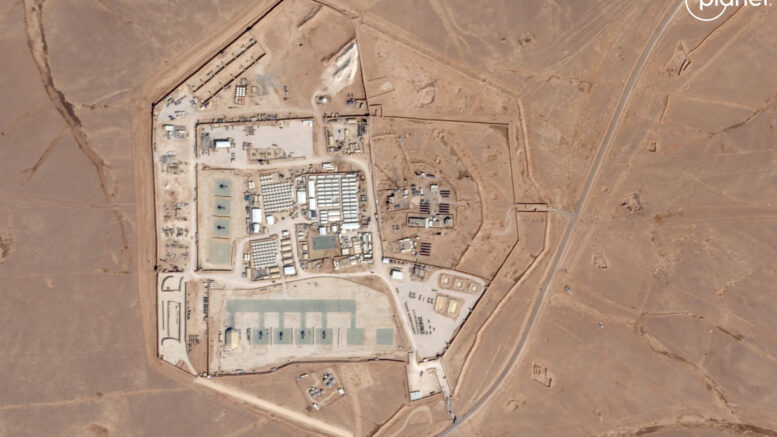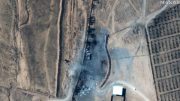A drone attack on January 28th on a military base in northeastern Jordan killed 3 American soldiers and injured more than 40 other service members. What is Tower 22?
The military base, known as Tower 22, is located along the demilitarized zone between Jordan and Syria, with the Iraq border only 6 miles away. The location makes this military base useful for many reasons, including close proximity to key strategic areas and a route for weapons shipment.
According to the Department of Defense in a CENTCOM statement, approximately “350 U.S. Army and Air Force personnel deployed to the base, conducting a number of key support functions, including support to the coalition for the lasting defeat of ISIS.”
What Happened
The drone attack took place during the night near the sleeping quarters, leading to high casualties.
The drone attack on January 28th at this base resulted in the deaths of three American soldiers and injuries to over 40 other service members. Identified as Sgt. William Jerome Rivers, 46; Spec. Kennedy Ladon Sanders, 24; and Spec. Breonna Alexsondria Moffett, 23, these casualties marked the first American losses since the onset of the conflict in Gaza.
According to US defense officials, the drone might’ve been missed due to its low flight path. It might’ve been mistaken for an American aircraft returning to Tower 22.
In addition, Tower 22 was not outfitted with weapons that could “kill” aerial threats like drones and instead relied on electronic warfare systems designed to disable them or disrupt their path to a target.
US’ Response
On January 31st, 2024, the White House formally assigned blame for the attack to an umbrella group of Iraqi militants.
“The attribution that our intelligence community is comfortable with is that this was done by the umbrella group called the Islamic Resistance in Iraq,” National Security Council spokesman John Kirby said.
The Islamic Resistance in Iraq consists of many smaller groups, including Kata’ib Hezbollah.
Since the attack, the Biden administration has repeatedly said that they will retaliate and respond to these attacks.
“We had a tough day last night in the Middle East. We lost three brave souls in an attack on one of our bases, and we shall respond,” Biden said. In a statement, he also wrote, “[The US] will hold all those responsible to account at a time and in a manner (of) our choosing.”
Defense Secretary Lloyd Austin said, “We will take all necessary actions to defend the United States, our troops, and our interests.”
Retaliation
The retaliation indeed came on February 6th and 7th, 2024.
The US military launched an aerial attack on numerous sites in Iran and Syria connected to militias supporting the Iranian Revolutionary Guard. Iran has denied any involvement in the Jordan attack.
The strikes hit over 85 targets, including command headquarters, ammunition storage sites, and intelligence centers.
“These targets were carefully selected to avoid civilian casualties and based on clear, irrefutable evidence that they were connected to attacks on U.S. personnel in the region,” John Kirby said.
While the casualties of militia members still remain unclear, the Syrian Observatory for Human Rights reported that 18 militants were killed in the Syria strikes.
This response, however, only served as the beginning of the US’ retaliation.
On February 7th, the day after, a US military drone strike killed a Kataib Hezbollah commander, Wisam Mohammed Saber al-Saedi, who was implicated in the attacks on American forces in the region.
According to Central Command, there were no indications of collateral damage or civilian casualties.
The strike was executed via a drone targeting an SUV vehicle in Baghdad.
Iraq was aware of the US’ intent to respond to the drone attack in Jordan, but they were not informed beforehand of the strike in Baghdad.
Iraq reportedly saw the strike as “new aggression by the United States” and that the move “undermine[d] all understandings” between Iraq and the US.
As aggression in the Middle East continues to be exacerbated since the conflict in Gaza, the US faces the challenge of managing escalating tensions in the region without inadvertently fueling further instability.






Be the first to comment on "US Responds to Jordan Drone Attack"